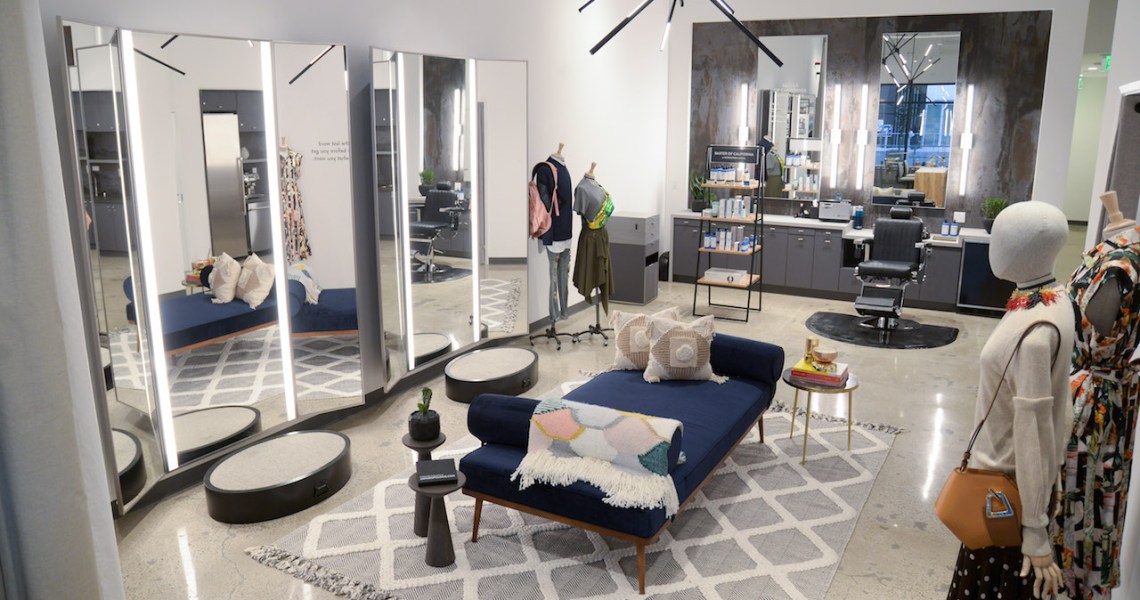The pandemic led to a massive surge in e-commerce, which for many fashion companies was a good thing. But on the flip side of more online shopping is the almost guaranteed increase in returns. A Deloitte study from June found that retail return rates grew 33% between 2020 and 2021.
Returns are the bane of any online business’s existence. Not only do they turn a sale into a non-sale, but they’re usually a net loss for the brand, considering the money spent on processing the return. Sometimes the returned items are resold, other times they’re sold off in bulk to a discount reseller, and other times they get thrown away. An increase in returns means an increase in new strategies for dealing with them. Brands and retailers are trying everything, from implementing new programs to prevent returns before the purchase to finding new ways to process returns after the fact.
One strategy that’s been catching on is the returnless refund. Amazon has been practicing giving customers refunds on a product without even asking for the thing back since 2017. Walmart followed suit right after the last holiday season, when the surge of e-commerce meant there was a huge flood of returned items. Oftentimes, these policies are not advertised publicly, but are communicated to customers individually over customer support when a product is returned.
The strategy is particularly common in fast fashion, where the product is cheap and has a short shelf life, making the hassle of processing the return and trying to sell it again even less appealing.
“Many retailers are trying to figure out how to reduce their costs,” said Nikki Baird, vp of retail innovation at Aptos. “Lots of returns come back unsellable, so it’s not worth it to the retailer to pay for the customer to return it. There’s also an opportunity for fraud.”
To prevent abuse, retailers typically set limitations on their returnless refunds offered. For example, according to a customer service email viewed by Glossy, Chinese fast-fashion company Cider offers returnless refunds only in the value of store credit, not cash. There’s also a 48-hour period before customers can make another return. Cider did not respond to a request for comment on this story.
Nordstrom, famous for its extremely forgiving return policy, has seen success streamlining returns with its Nordstrom Local stores. These stores carry no inventory, are much smaller than a typical Nordstrom store at around 600 square feet and focus solely on services like pick-ups and returns. There are seven Nordstrom Local stores in existence now, focused in the retailers biggest markets, including Los Angeles and New York.
“Customers love using Nordstrom Locals for returns, which we get back eight days faster at these locations [compared to when customers must ship returns], allowing us to turn products around and sell them again much faster,” said Ken Worzel, Nordstrom’s chief digital officer.
Encouraging returns in-store as opposed to accepting them by mail can help reduce some of the workload, according to Baird.
”I see more retailers putting a heavier emphasis [in marketing] on ‘return to store’ as the more convenient option, stating that it gets customers their refund faster or the option to pick the right item right away,” Baird said. “It doesn’t prevent returns, but it does make them cost less to the retailer.”
Virtual try-on can also help prevent returns before they happen by helping customers get as close to the right fit as possible when ordering online. Deloitte found that the No. 1 reason people return items, causing 52% of all returns, is due to ordering an incorrect size. Brands like ThirdLove and Ba&sh have started offering virtual fitting in the last 18 months. The technology has been bolstered by the pandemic, with giant comapnies like Amazon, Walmart and Google all debuting virtual try-on options.
These programs can do wonders to reduce return rates. Otero, a menswear brand that uses virtual try-on technology provided by Perfitly, reduced its return rate from 30% to 3% since partnering with Perfitly in July, according to Otero founder Steve Villanueva.
“Retailers need to invest in fit technology and pay close attention to things they do that drive returns,” Baird said. “Reducing returns can pay off even more than trying to adjust pricing to capture higher shipping costs. If you can get customers to keep what they buy, then there’s no shipping costs to bear for returns.”
Reading List
Inside our coverage
Flickplay brings digital collectibles to retail.
How Aurate is growing through collaboration.
What we’re reading




